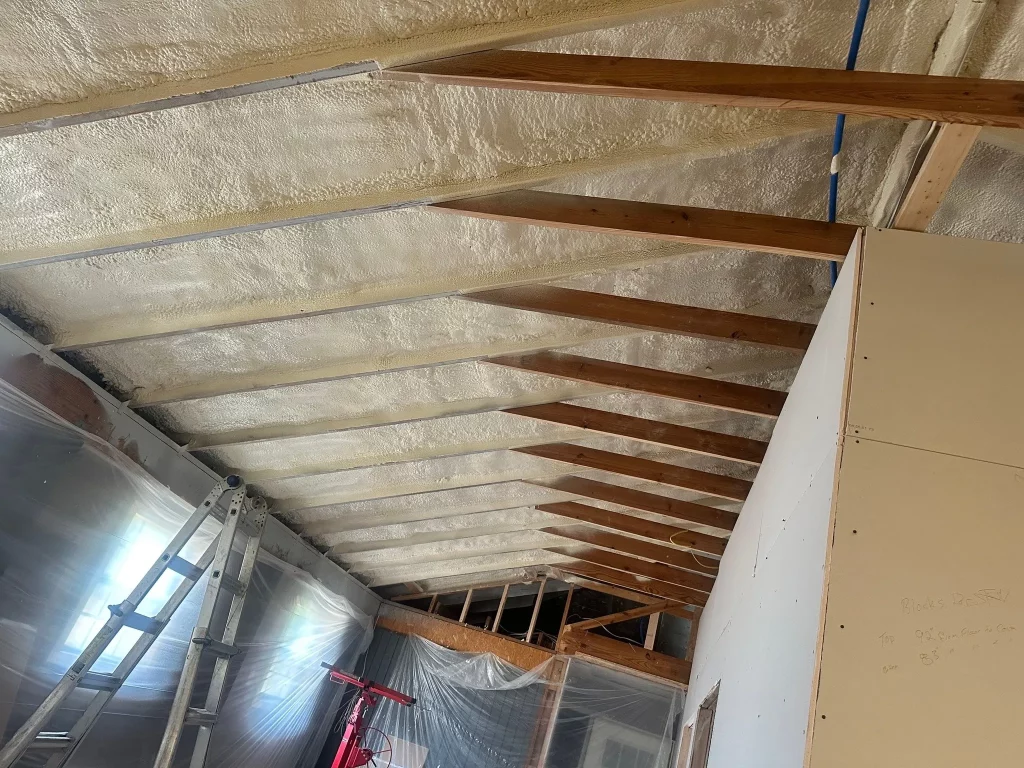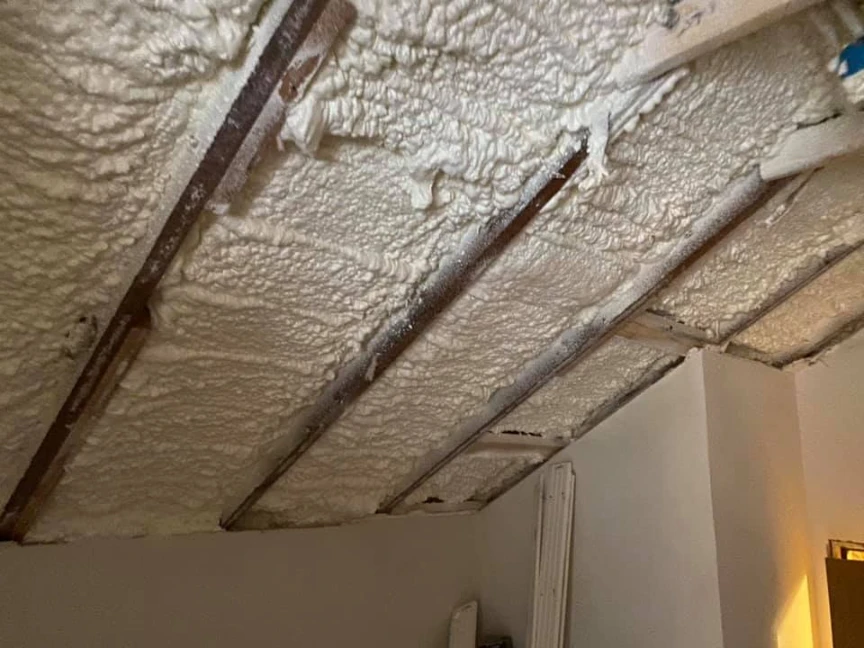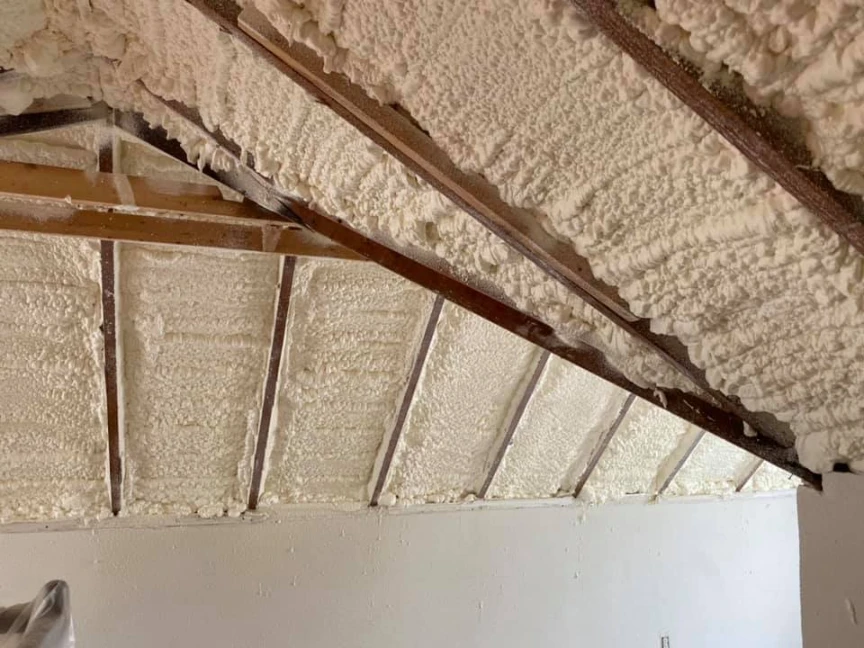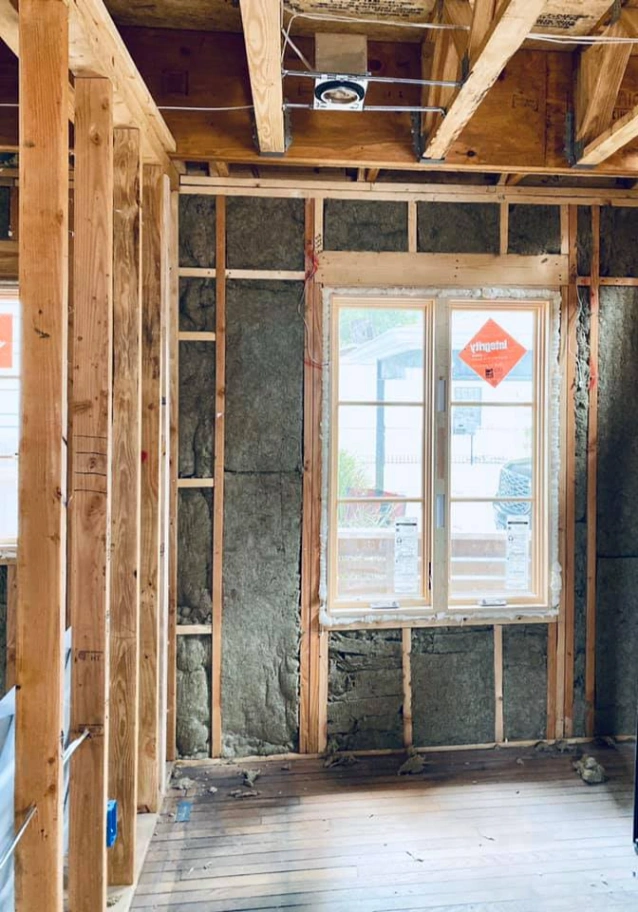Property owners often notice signs that point to poor insulation performance. Spray foam insulation addresses these issues by creating an airtight seal that blocks air leaks and improves thermal resistance. Key indicators include rising energy costs, uneven temperatures room to room, drafts around windows and doors, moisture buildup in walls or attics, excessive noise from outside, and outdated or damaged existing insulation. Recognizing these signals early allows for targeted improvements that enhance comfort and efficiency.
This article outlines these six signs in detail, drawing from practical observations in residential and commercial settings. Readers gain clear steps to assess their own properties and understand when spray foam insulation makes sense. Information here comes from hands-on work with insulation projects across varied climates, particularly in regions like Texas with hot summers and occasional cold snaps.
High Energy Bills Despite Regular Maintenance
Energy costs climb when insulation fails to hold heat or cool air inside. Homes or buildings lose up to 30% of conditioned air through gaps and poor barriers, according to the U.S. Department of Energy. Property owners see this in monthly utility statements that stay high even after thermostat adjustments or appliance upgrades.
In Texas, where air conditioning runs for months, this effect hits harder. Summers push cooling demands, and weak insulation forces systems to work overtime. One common pattern involves attics that trap heat during the day, radiating it back into living spaces at night.
Bonus Tip: Check recent bills against local averages from the U.S. Energy Information Administration. A 20% jump over baseline suggests air leakage issues worth investigating.
Uneven Temperatures Room to Room
Rooms that feel too hot or cold compared to others signal insulation gaps. Heat moves freely through walls and floors without proper barriers, creating hot spots near windows and chill zones in corners. This imbalance stems from air infiltration that spray foam can seal effectively.
Practical experience shows this in older homes where settling foundations shift insulation materials. In humid areas, temperature swings also encourage mold growth on uninsulated surfaces. Owners report discomfort in family rooms versus bedrooms, often traced to attic vents or floor joists.
To spot this, use a thermometer in multiple rooms on the same day. Differences over 4 degrees Fahrenheit indicate a need for better coverage.
Persistent Drafts and Air Leaks
Drafts whistle through cracks around doors, outlets, and baseboards, pulling in outside air. These leaks not only waste energy but also bring in dust, pollen, and allergens. Spray foam expands to fill irregular spaces, stopping airflow where fiberglass or cellulose might sag.
In windy Texas plains, exterior walls face constant pressure from gusts. Inspections reveal leaks at recessed lights or plumbing penetrations, common in mid-century builds. Feel for air movement on breezy days; if curtains flutter without open windows, leaks exist.
Bonus Tip: Apply the incense stick test—light a stick and watch smoke trails near suspected areas. Steady drift toward cracks confirms drafts.
Moisture Problems and Condensation
Excess humidity leads to condensation on windows, wet spots in attics, or musty odors in basements. Poor insulation allows temperature differences to form dew points inside walls, fostering mold and wood rot. Spray foam’s moisture-resistant properties prevent this by maintaining dry conditions.
Regional factors in coastal Texas amplify risks, with high humidity levels year-round. Data from the National Oceanic and Atmospheric Administration notes average relative humidity above 70% in summer months, stressing vapor barriers. Signs include peeling paint or warped trim from trapped dampness.
Address this by monitoring humidity levels with a simple gauge; aim for 30-50% indoors. Visible water streaks signal urgent needs.
Noise Intrusion from Neighbors or Traffic
Outside sounds penetrate thin walls, disrupting sleep or focus. Standard insulation absorbs some vibration but struggles with low-frequency noises like traffic rumble. Spray foam adheres tightly, reducing sound transmission by up to 50% in tests.
Urban properties near highways show this most clearly. Practical fixes involve applying foam in cavities between studs, creating a denser barrier than loose-fill options. Owners in apartment complexes often complain of foot traffic echoes, eased by full encapsulation.
Listen for clarity of distant noises; if conversations carry from the street, soundproofing upgrades help.
Aging or Inadequate Existing Insulation
Visual checks reveal sagging batts, settled blown-in material, or exposed wires in attics. Insulation over 20 years old loses effectiveness due to compression or contamination. The International Energy Conservation Code recommends R-values of at least 38 for attics in warm climates, often unmet in older installs.
Texas homes built before 1990 commonly fall short, per state energy audits. Dust accumulation reduces performance by 15-20%, as noted in reports from the Oak Ridge National Laboratory. Lift attic flooring to inspect; thin spots or gaps mean time for replacement.
Bonus Tip: Calculate current R-value using online tools from energy.gov—input material type and depth for quick assessment.
Insulation Types Comparison
Different materials suit various needs. The table below compares spray foam to common alternatives based on key performance metrics.
| Insulation Type | R-Value per Inch | Air Sealing Ability | Moisture Resistance | Cost Range per Sq Ft |
|---|---|---|---|---|
| Spray Foam (Closed-Cell) | 6.5-7.0 | Excellent (expands to fill gaps) | High (water-resistant) | $1.50-$3.00 |
| Fiberglass Batts | 3.1-4.4 | Poor (requires perfect installation) | Low (absorbs moisture) | $0.50-$1.50 |
| Cellulose Blown-In | 3.2-3.8 | Good (fills voids) | Moderate (can hold some water) | $0.80-$2.00 |
| Rigid Foam Board | 4.0-5.0 | Fair (seals when taped) | High (closed-cell options) | $0.75-$2.50 |
This comparison highlights spray foam’s edge in sealing and durability, especially for retrofit projects. While spray foam stands out in performance, several factors should guide your choice before proceeding.

Things to Consider Before Making a Decision
Evaluate property age and layout first. Older structures may need structural checks for foam compatibility. Budget for professional assessment to measure current efficiency via blower door tests, which quantify leaks accurately.
Climate plays a role. In hot-humid zones like Texas, prioritize vapor permeability to avoid trapped moisture. Long-term savings depend on local energy rates; calculate payback using tools from energy.gov. Consult building codes for required R-values in your area.
Weigh DIY risks against pro installs, as uneven application reduces benefits. Factor in health impacts, like improved air quality from fewer leaks.
Common Questions
How Long Does Spray Foam Installation Take?
Property owners frequently ask about installation timelines. Projects typically take 1–3 days for homes under 2,000 square feet, depending on access.
Is Spray Foam Insulation Environmentally Friendly?
Another query involves environmental impact. Closed-cell foam uses HFO blowing agents with low global warming potential, per EPA standards.
Key Takeaways on Insulation Signs
Spotting high bills, uneven temps, drafts, moisture, noise, or old insulation guides upgrades. Spray foam tackles these by sealing air paths and boosting efficiency. Each property differs, so assess specific needs against climate and usage. Review goals like cost savings or comfort to decide next steps.
Next Steps for Better Insulation
Take time to inspect your space for these signs. Gather utility data and note problem areas. Reach out to us for a site evaluation. Stellrr offers assessments at info@stellrr.com or by calling (512) 710-2839. Start with a free consultation to map options suited to your setup. This approach ensures choices align with real needs, leading to lasting improvements without guesswork.
Questions Homeowners Often Ask About Spray Foam Insulation
Does Spray Foam Work in All Climates?
Spray foam adapts well to varied conditions. In hot Texas summers, it reflects heat effectively. Colder regions benefit from its high R-value, maintaining warmth without drafts. Adjust density for extreme humidity to prevent settling.
How Long Does Spray Foam Last?
Installed correctly, spray foam endures 25-80 years. It resists settling and degradation better than fiber options. Regular attic ventilation extends lifespan by controlling dust buildup.
Can Spray Foam Reduce Allergy Symptoms?
By sealing gaps, spray foam blocks pollen and dust entry. This improves indoor air, easing symptoms for sensitive individuals. Combine with HVAC filters for best results.
Is Spray Foam Safe for Pets and Kids?
Cured foam poses no off-gassing risks. Use low-VOC products and ventilate during install. Pets avoid wet areas, and the material doesn’t attract pests like rodents.
What If My Property Has Asbestos?
Test for asbestos before any work. If present, abatement pros handle removal first. Spray foam then provides a safe, modern barrier over clean surfaces.





